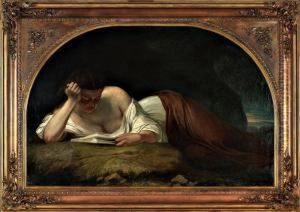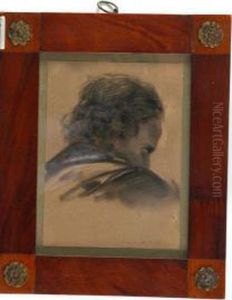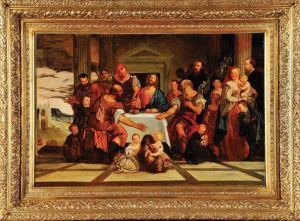Francisco Metrass Paintings
Francisco Augusto Metrass was a Portuguese painter, illustrator, and engraver born on October 7, 1825, in Lisbon, Portugal. He is often considered one of the leading figures in the Romantic movement in Portuguese painting. Metrass displayed a natural talent for the arts from an early age, and his family, recognizing his potential, encouraged him to pursue an artistic education.
Metrass began his formal training at the Lisbon Academy of Fine Arts, where he studied under renowned artists of the time. His work was deeply influenced by the Romanticism that was sweeping through Europe, and he embraced the movement's emphasis on emotion, individualism, and the glorification of the past and nature.
In pursuit of further development, Metrass traveled to Paris in 1847, which was then the center of the art world. There, he immersed himself in the vibrant cultural scene and continued his studies, refining his technique and absorbing the influences of French artists. He also spent time in Italy, where he was inspired by the works of the Renaissance masters and the rich historical landscape.
Metrass's paintings often depicted historical and religious themes, with a particular focus on scenes of martyrdom and sacrifice, which resonated with the Romantic ethos of heroism and pathos. While his subject matter was rooted in the past, his style reflected the contemporary currents of European art, blending realism with a poetic sensibility.
Returning to Portugal, Metrass became a key figure in the local art scene. He contributed illustrations to literary works and engaged with the intellectual circles of his time. Despite his relatively short career, due to his untimely death from tuberculosis on March 1, 1861, Metrass left a significant mark on Portuguese art. His works are characterized by their emotional expressiveness, dramatic use of light and shadow, and meticulous attention to detail.
Today, Francisco Metrass is remembered as a pioneer of Portuguese Romantic painting, and his works are featured in various museums and collections in Portugal, including the National Museum of Contemporary Art in Lisbon. His legacy is not only in the paintings he left behind but also in his influence on subsequent generations of Portuguese artists.


